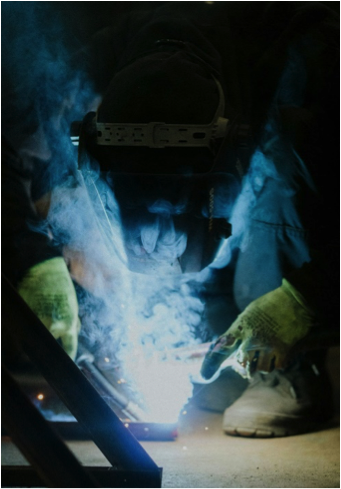Retrofitting Tunnel Pasteurizers: A Step-by-Step Guide
PRO Engineering / Manufacturing Inc.
- Highlight the complexity and necessity of retrofitting tunnel pasteurizers.
- Emphasize the importance of careful evaluation, planning, and execution.
- Brief overview of the guide’s objectives.
- Evaluation of Efficiency and Compatibility
- Inspection for wear and tear.
- Assessment of age and performance of current equipment.
- Compliance and Safety Standards
- Verification against safety standards and regulatory requirements.
- Identification of Upgrade Needs
- Noting desired features or capabilities for the retrofit.
- Project Planning
- Creation of a detailed project plan with objectives and timelines.
- Budget and Resources
- Estimation of costs and identification of required materials and labor.
- Regulatory Compliance
- Review of permits and regulations relevant to the retrofit.
- Stakeholder Communication
- Ensuring informed involvement of all parties.
Upgrading Components and Systems
- Component Evaluation and Selection
- Analysis of key elements like conveyor systems, heat exchangers, and control devices.
- Modernization
- Integration of advanced technology for better control and automation.
- Energy Efficiency
- Upgrading to more energy-efficient components.
- Data and Sensor Enhancements
- Addition of new sensors for improved data collection.
- Systematic Integration
- Careful installation and testing of upgrades.
- Documentation and Communication
- Recording modifications and maintaining open lines of communication with the team.
- Performance Testing
- Running test batches and adjusting settings for optimal performance.
- Microbiological Testing
- Ensuring the system effectively eliminates harmful microorganisms.
- Adjustments Based on Feedback
- Fine-tuning based on test results and continuous monitoring.
- Minimizing Production Disruption
- Strategies for retrofitting without affecting the production schedule.
- Common Challenges
- Addressing equipment compatibility, downtime, sterilization levels, and staff training.
- Regulations and Certifications
- Compliance with industry standards and local guidelines.
- Energy Efficiency and Cost Savings
- Potential benefits of retrofitting for energy use and operational costs.
- Timeline for Retrofitting
- Expected duration of the retrofitting process and factors affecting it.
- Recap of the steps taken and the importance of each in the retrofitting process.
- The benefits achieved through retrofitting, including improved efficiency, compliance, and product safety.
- Encouragement for continuous improvement and maintenance to ensure optimal performance.
Introduction
So, you think retrofitting tunnel pasteurizers is as simple as upgrading your phone’s operating system? Well, think again. The process requires careful evaluation, meticulous planning, and precise execution to ensure optimal performance.
But fear not, with our step-by-step guide, you’ll navigate through the intricacies of transforming your pasteurization system with ease. From assessing your current setup to fine-tuning the adjustments, each stage is crucial for achieving the desired results.
Stay tuned for a comprehensive walkthrough that will streamline your retrofitting journey.
Assessing Current Equipment
If you’re planning to retrofit your tunnel pasteurizer, begin by evaluating your current equipment for efficiency and compatibility with the new upgrades. Check for any signs of wear and tear, ensuring all components are functioning optimally.
Look at the age of the equipment and consider if newer models would offer improved performance or energy efficiency. Assess whether your current setup meets safety standards and regulatory requirements.
Take note of any specific features or capabilities you wish to add during the retrofitting process. Understanding the strengths and limitations of your existing equipment is crucial for planning a successful retrofit that enhances your tunnel pasteurizer’s overall performance and longevity.
Planning for Retrofit
When preparing for the retrofit of your tunnel pasteurizer, consider creating a detailed project plan to streamline the process efficiently. Start by assessing the current equipment to identify areas that need improvement. Collaborate with your team to establish clear objectives and timelines for the retrofit.
Evaluate the budget needed for the project, including costs for materials, labor, and any external services required. Determine if any permits or regulations need to be addressed before starting the retrofit. Communication is key to ensure that all stakeholders are informed and involved throughout the planning phase. By carefully planning for the retrofit of your tunnel pasteurizer, you can increase the chances of a successful and smooth upgrade process.
Upgrading Components and Systems
To enhance the efficiency of your tunnel pasteurizer, consider upgrading key components and systems in a strategic manner. Start by assessing the condition of crucial elements such as the conveyor system, heat exchangers, and temperature control devices. Upgrading these components can improve overall system performance and product quality.
Look into modernizing control systems with advanced technology for better monitoring and automation capabilities. Upgrading to energy-efficient components can also lead to cost savings in the long run. Additionally, consider retrofitting your pasteurizer with new sensors for enhanced data collection and analysis.
Implementing Changes
Consider systematically integrating the upgrades discussed earlier to enhance the performance of your tunnel pasteurizer.
Start by carefully implementing the recommended changes to the components and systems. Ensure that each upgrade is installed correctly and tested thoroughly before moving on to the next one. Pay close attention to any specific instructions provided by the manufacturer or technician.
Keep track of the progress and document any modifications made during the retrofitting process. Regularly communicate with your team to ensure everyone is on the same page and understands their roles in the implementation phase.
Testing and Fine-Tuning
To ensure the effectiveness of the implemented upgrades, thoroughly test and fine-tune the tunnel pasteurizer’s performance. Begin by running test batches through the pasteurizer, closely monitoring temperature, conveyor speed, and product flow. Adjust settings as needed to achieve the desired pasteurization levels and product quality.
Conduct microbiological testing on the output to confirm that the pasteurizer is effectively eliminating harmful microorganisms. Fine-tune the pasteurizer by making small adjustments to parameters based on the test results. Continuously monitor and record data during this process to track improvements accurately.
Engage with your maintenance team to address any mechanical issues that may arise during testing. By meticulously testing and fine-tuning, you can optimize your tunnel pasteurizer for peak performance.
Frequently Asked Questions
How Can I Ensure That the Retrofitting Process Will Not Disrupt My Production Schedule?
To ensure the retrofitting process won’t disrupt your production schedule, plan ahead by scheduling downtime, coordinating with your team, and communicating with suppliers.
Stay proactive in addressing any potential issues to minimize disruptions.
Contact PRO Engineering / Manufacturing to ensure a smooth transition, professionalism since 1977.
What Are Some Common Challenges That Companies Face When Retrofitting Tunnel Pasteurizers?
When retrofitting tunnel pasteurizers, common challenges companies face include:
- Equipment compatibility issues
- Downtime for installation
- Ensuring proper sterilization levels
- Training staff on new processes
Overcoming these hurdles requires careful planning and coordination.
Are There Any Regulations or Certifications That Need to Be Considered During the Retrofitting Process?
When retrofitting tunnel pasteurizers, you must consider regulations and certifications. Ensure compliance with industry standards like FDA or ISO. Check local health department guidelines.
Prioritize safety and quality to meet requirements and maintain the integrity of your pasteurization process.
Can Retrofitting a Tunnel Pasteurizer Lead to Increased Energy Efficiency or Cost Savings?
Retrofitting a tunnel pasteurizer can boost energy efficiency and save costs.
Upgrading components like heat exchangers and insulation can lead to improved performance.
Consider consulting PRO experts to optimize your system for maximum benefits.
How Long Does the Typical Retrofitting Process for a Tunnel Pasteurizer Take from Start to Finish?
The typical retrofitting process for a tunnel pasteurizer takes about 4-6 weeks from start to finish.
You’ll see improvements in efficiency and potentially cost savings.
Ensure proper planning and coordination for a successful upgrade.
Conclusion
After following the step-by-step guide for retrofitting tunnel pasteurizers, you have successfully upgraded your equipment to meet current industry standards.
By assessing your current equipment, planning for retrofit, upgrading components and systems, implementing changes, and testing and fine-tuning, you have ensured that your tunnel pasteurizers are operating efficiently and effectively.
Congratulations on completing this important process to improve the safety and quality of your products. Keep up the great work!
RESOURCES:
- PRO Engineering/Manufacturing Inc. Overview:
Provides insights into PRO Engineering/Manufacturing Inc.’s offerings in tunnel pasteurizers, including their PRO/LINE™ Series and Slim/Line™ tunnel pasteurizers. It highlights features like removable side panels, reduced energy use, and clog-resistant spray nozzles, showcasing the company’s expertise in customizing solutions for beverage product shelf stability and consumption safety.
- PRO Engineering / Manufacturing Retrofit Division:
This article delves into methods for retrofitting tunnel pasteurizers to improve energy efficiency and sustainability. It discusses heat recovery systems, insulation improvements, and the integration of alternative energy sources. The benefits of retrofitting include reduced energy consumption, lower operating costs, and minimized carbon footprint.
ABOUT PRO ENGINEERING / MANUFACTURING INC.
Trusted | Knowledge | Quality
We have been involved in pasteurizers since 1977.
PRO Engineering / Manufacturing Inc. has developed a range of small, medium, and large-sized tunnel & batch pasteurizers to fit the needs of BrewMasters and Beverage Makers. When our customers asked for more compact as well as full-size tunnel pasteurizers, PRO developed models to fit our customers’ needs. Then our customers needed a batch pasteurizer. We now provide batch pasteurizers; PRO is a business that continually innovates to meet customer needs.
For more than 40 years, we have been delivering solutions for beverage product shelf stability and consumption safety.
Edward A. Michalski CEO
Ed Michalski started his career in the beverage industry by designing stainless steel, higher flow, spray headers for Pabst Brewing. Along with the header design he also developed a process to produce the new headers.
Ed, along with his brother David, formed PRO Engineering / Manufacturing Inc. Based on what they learned by re-designing and refurbishing other manufacturers’ pasteurizers, Ed and PRO started to offer the pasteurizer marketplace superior new pasteurizers. PRO Engineering / Manufacturing Inc. has been designing and manufacturing great pasteurizers for over four decades.
For more information on tunnel and batch pasteurization contact PRO Engineering / Manufacturing, Inc. at [email protected] or call (414) 362-1500 and ask for Ed Michalski, CEO.
Partner with a PRO!… PRO Engineering / Manufacturing Inc.
Internal Resources:






